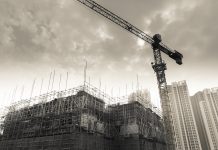Tassos Kougionis, director of sustainability and ESG at McBains, highlights several areas of the Future Homes and Buildings Standards where guidance needs more clarity
The recently published Future Homes and Buildings Standards consultation points the way to a more sustainable future for the construction sector. But despite its positive intentions, there remain a number of critical considerations that require government and industry attention.
User impact of technology
Firstly, consideration of the user impact of technology. While improvements in technology are great, adding more intricate systems can impact the user experience. To optimise the benefits of interconnected systems such as photovoltaics, smart water tanks, heat pumps, ventilation systems, battery technologies, and electric vehicle charging, it is important to provide thorough home user guides and handovers. Increased attention on the user would be beneficial.
Grid infrastructure resilience
It also needs to be more explicit on grid infrastructure resilience. The recent linkage of decarbonisation to an all-electric strategy while waiting for the UK electricity grid to decarbonise presents difficulties if carried out improperly. This might result in higher operating costs for users, worries about the timing and effect of energy use, and trigger questions about addressing these new buildings in the future when they transition to existing structures.
Existing buildings
The majority of the nation’s building portfolio is older and cannot be adequately powered by cleaner energy alone. The consultation mentions existing buildings but doesn’t go into enough detail. The government recently retracted its net zero commitments in the King’s Speech, creating uncertainty of the direction of travel, so clarity is urgently needed so that occupiers, owners, and investors can make plans. In addition, we must set strict guidelines for monitoring and maintenance as well as promote adaptive reuse.
The costs
Capital cost uplifts and long-term implications also need to be addressed. The cost over time for the individuals who will be residing in these homes is often overlooked in favour of the construction expense. Included in the standards should be the expense of replacing the system, upkeep, exposure to energy prices, and overall health and well-being. Checks and post-occupancy insurance would be appreciated. Our purpose should be centred on addressing fuel poverty and making sure that these standards have good effects on all facets of society.
Similarly, the cost of long-term production and use of materials need to be taken into account. This is crucial because it’s necessary to acknowledge the impact of the materials used in construction.
Local vs central control
The local versus central conundrum also needs clarifying. The amended rules appear to favour central control over net zero requirements, as stated by government officials Baroness Penn and Lee Rowley recently. This top-down strategy, however, conflicts with the National Planning Policy Framework’s (NPPF) guidelines and the government’s wider intention to transfer authority to local government.
The situation has been further complicated by a ruling in February by the High Court, which upheld a challenge to the Planning Inspectorate’s decision regarding net-zero homes in Oxfordshire’s Salt Cross Garden Village. The court dismissed the government’s legal team’s defence of the local planning inspectorate. While national regulations establish a “minimum requirement,” it becomes crucial to protect local sovereignty to design policies that are in line with both national goals and the particular demands of various communities.
Energy efficiency approach
And finally, it needs to address fabric upgrades and the approach to energy efficiency. To promote the widespread use of solar PV panels, the Future Homes Standard suggests doing away with fossil fuel heating systems and replacing them with extremely efficient air source heat pumps or comparable electric solutions. The majority of those remedies don’t have very long lifespans. Reducing the amount of heat loss from fabric components has to be the main goal for structures that require heating.

















